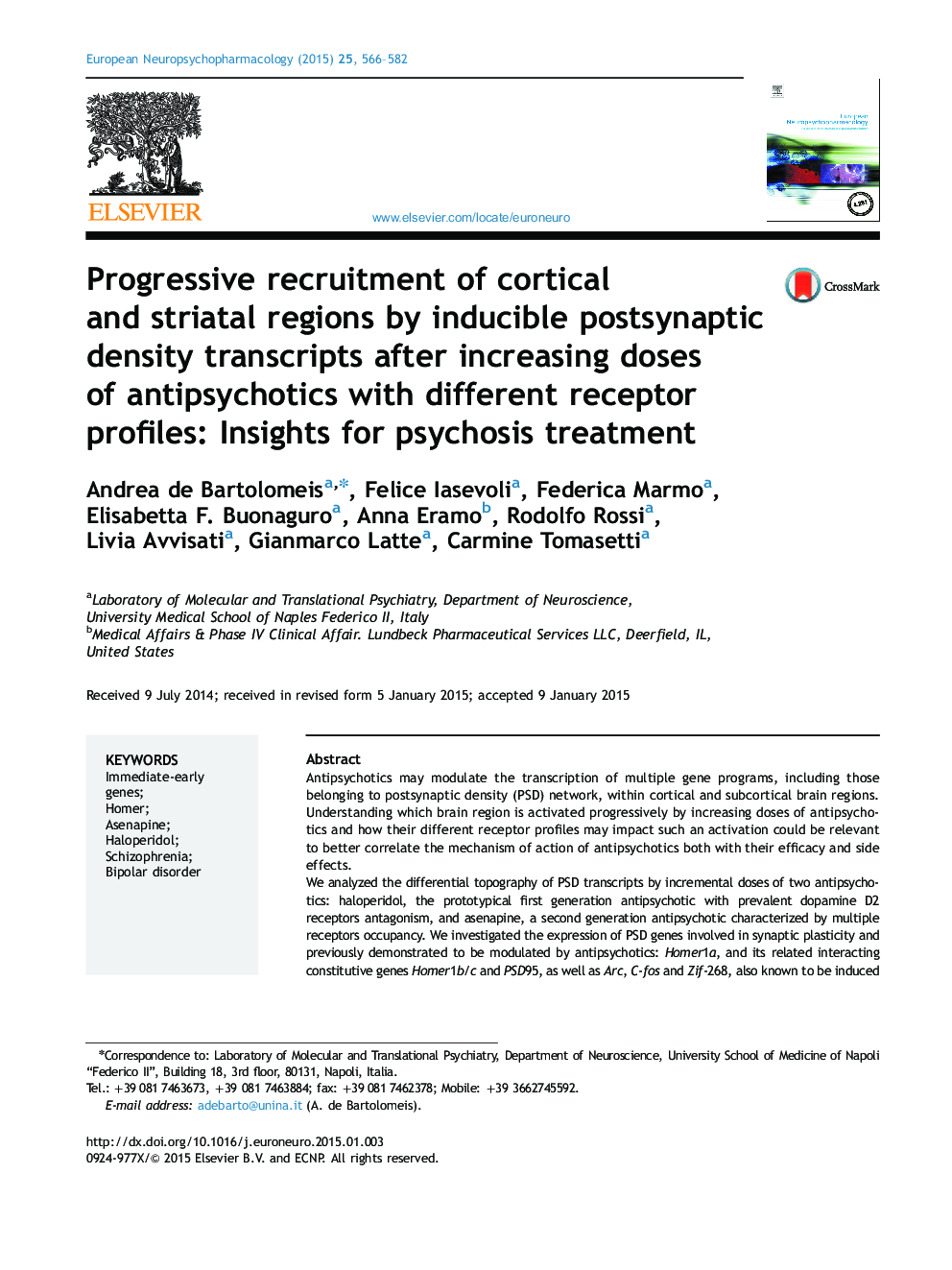| Article ID | Journal | Published Year | Pages | File Type |
|---|---|---|---|---|
| 10298876 | European Neuropsychopharmacology | 2015 | 17 Pages |
Abstract
We analyzed the differential topography of PSD transcripts by incremental doses of two antipsychotics: haloperidol, the prototypical first generation antipsychotic with prevalent dopamine D2 receptors antagonism, and asenapine, a second generation antipsychotic characterized by multiple receptors occupancy. We investigated the expression of PSD genes involved in synaptic plasticity and previously demonstrated to be modulated by antipsychotics: Homer1a, and its related interacting constitutive genes Homer1b/c and PSD95, as well as Arc, C-fos and Zif-268, also known to be induced by antipsychotics administration. We found that increasing acute doses of haloperidol induced immediate-early genes (IEGs) expression in different striatal areas, which were progressively recruited by incremental doses with a dorsal-to-ventral gradient of expression. Conversely, increasing acute asenapine doses progressively de-recruited IEGs expression in cortical areas and increased striatal genes signal intensity. These effects were mirrored by a progressive reduction in locomotor animal activity by haloperidol, and an opposite increase by asenapine. Thus, we demonstrated for the first time that antipsychotics may progressively recruit PSD-related IEGs expression in cortical and subcortical areas when administered at incremental doses and these effects may reflect a fine-tuned dose-dependent modulation of the PSD.
Related Topics
Life Sciences
Neuroscience
Biological Psychiatry
Authors
Andrea de Bartolomeis, Felice Iasevoli, Federica Marmo, Elisabetta F. Buonaguro, Anna Eramo, Rodolfo Rossi, Livia Avvisati, Gianmarco Latte, Carmine Tomasetti,
